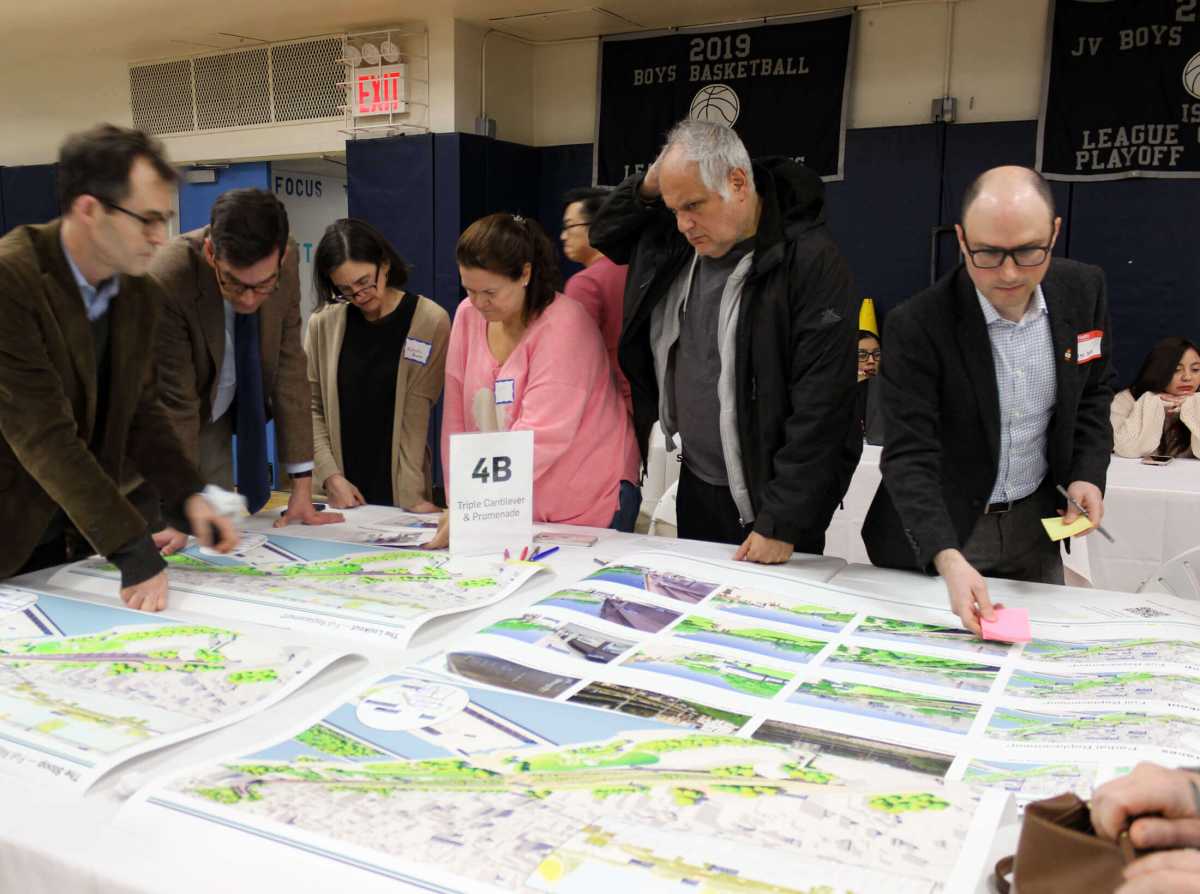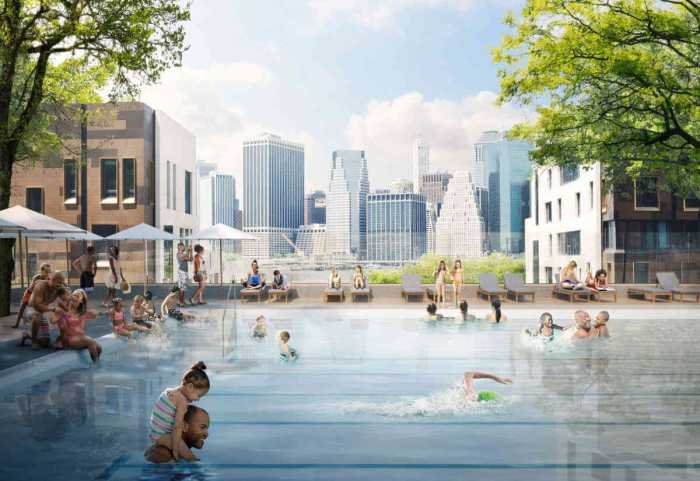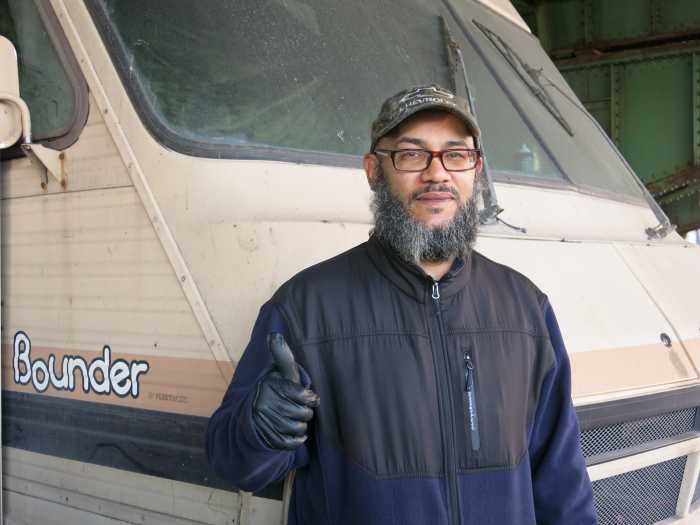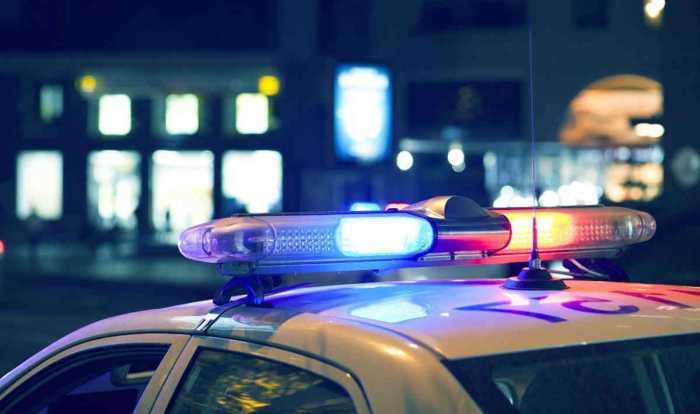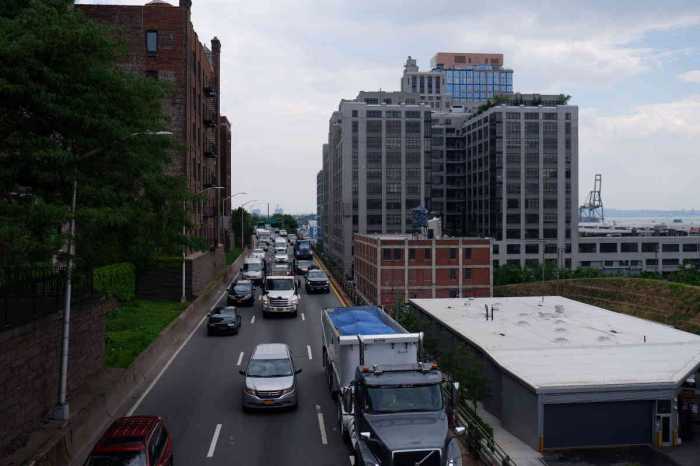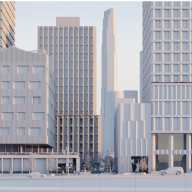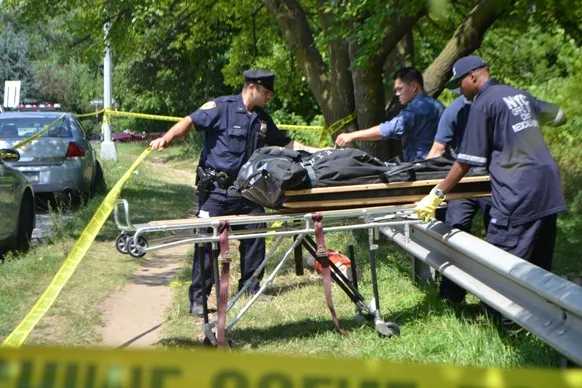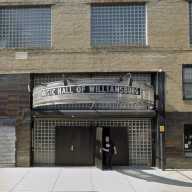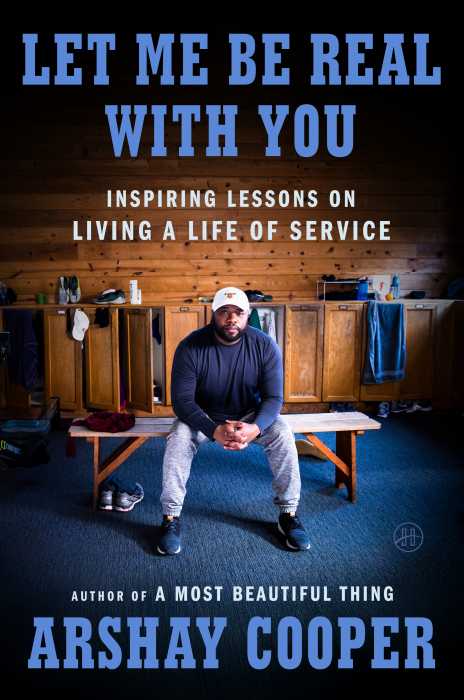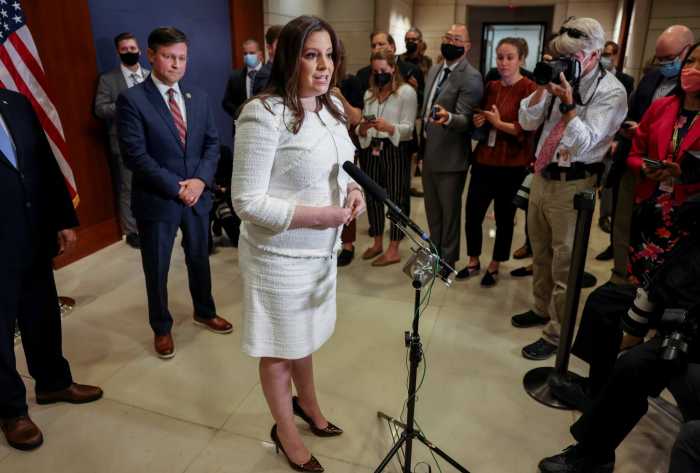More than 100 people filled a gymnasium in Brooklyn Friends School in Downtown Brooklyn Tuesday night to review the Department of Transportation’s refined concepts for the future of the city-owned section of the beleaguered Brooklyn-Queens Expressway, which includes the crumbling triple cantilever.
The meeting came just days after the city announced it would be delaying the launch of its environmental review process from spring to fall. The city will use the time to analyze the impact of reducing the number of BQE lanes in each direction from three to two, following intense pressure from community members and local elected officials.
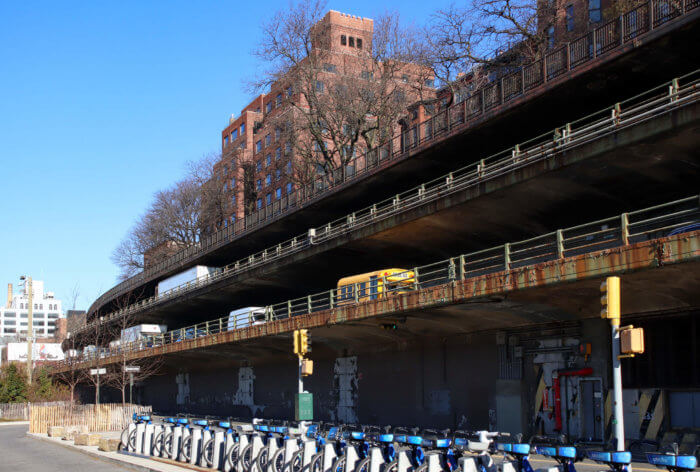
The department and its partners presented detailed renderings and full 3-D models of its three proposed concepts, which would all repair the roadway and better connect Brooklyn Heights to Brooklyn Bridge Park. But the updated models don’t address all the specifics, locals said.
“I’m concerned that we don’t understand — there’s no information being shared on the impact on the neighborhood, the impact on the park, the potential costs, and ultimately, we have not gotten a clear commitment from this administration for two lanes of traffic in each direction,” Council Member Lincoln Restler told Brownstoner at the meeting. “I want to see more aggressive capping, tunneling of the structure to limit the impacts on our community.”
Restler said that in meetings he had attended with City Hall and DOT, he had “encountered a lot of resistance to the push for two lanes.” Following an outcry, the city has agreed to study the issue, but that’s not enough, said Restler.
“As a direct result of the advocacy of every single elected official from Sunset Park to Greenpoint that represents the BQE demanding a two-lane solution, the administration has agreed to study it, but we need a commitment that this is the long-term solution for the project,” he said.
DOT presented the refined designs for the three concepts: The Terraces, The Lookout, and The Stoop. New renderings show in more detail proposed connections from the landmarked Brooklyn Heights Promenade and other areas in Brooklyn Heights to Brooklyn Bridge Park.
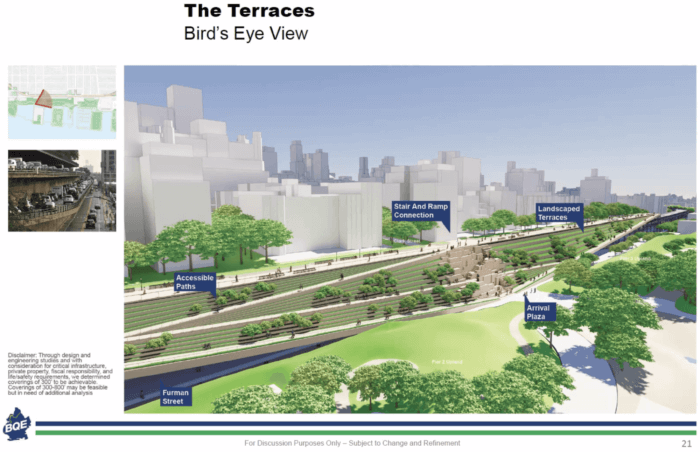
One fundamental difference between the three options is that The Terraces and The Lookout concepts could be completed with either a partial or full replacement of the existing retaining wall because the stacked position of the roadway is the same. The Stoop design would require a full replacement of the retaining wall because the design places the roadway on one level.
DOT reps said at the meeting that elements in each of the concepts could be melded together, depending on what the community wants. The three concepts will all enter a federal environmental review process and the final design won’t be known until the end of that review, which is estimated to take two years.
Elements of each design would likely be rejected, department reps said, and successful elements from each would be funneled through until a final design is settled on. There will be continued community input throughout that process.
Following the expected two-year federal environmental review process, DOT is expected to confirm the final design by the end of 2026 and start construction in 2027, projected timelines show.
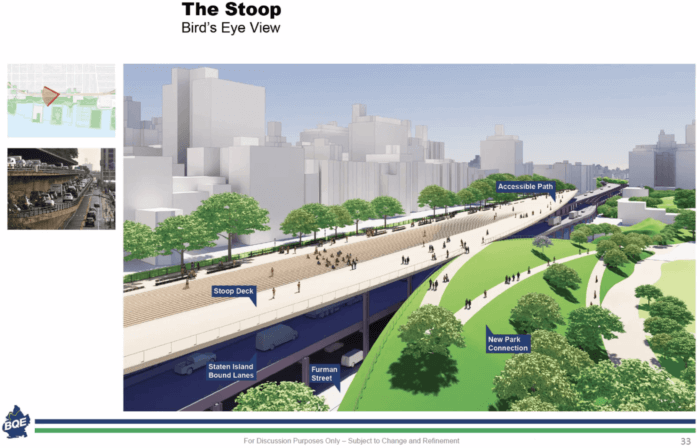
During construction, traffic mitigation could be handled with a temporary bypass, likely along Furman Street. Reps were adamant that any bypass will not be at the Promenade level. A bypass could span either the entire central section of the BQE or portions of it, depending on the final design and its construction requirements. Another option is to divert traffic and close sections of the roadway that would push truck traffic onto local roads and possibly make repairs more lengthy, DOT reps said.
“I don’t think that our community has been armed with the necessary information to make an informed decision,” Restler said. “Without information on the construction phase and on the impact on Brooklyn Bridge Park and the impact on the neighborhood, on the cost, it’s very hard to offer an informed perspective on the right choice.”
Brooklyn Heights local Cindy McLaughlin questioned why the city is continuing to design for trucks and car traffic in the first place, rather than rethink its infrastructure to fit the current climate crisis. “I think the vast majority of us want a walkable, bikeable, breathable, green, mixed-use vibrant city,” McLaughlin told Brownstoner. “I would like to see a corridor-wide solution that includes reducing and burying or removing the highway altogether.”
McLaughlin questioned why the city can’t wind back the clock on the Moses highway era and look to places like Amsterdam that have built walkable cities with successful public transport. The climate crisis would only be exacerbated by the new designs, she said, as the actual concrete and steel required will by themselves have a huge impact, in addition to the vehicle pollution and particulate matter that comes from both gas and electric vehicles.
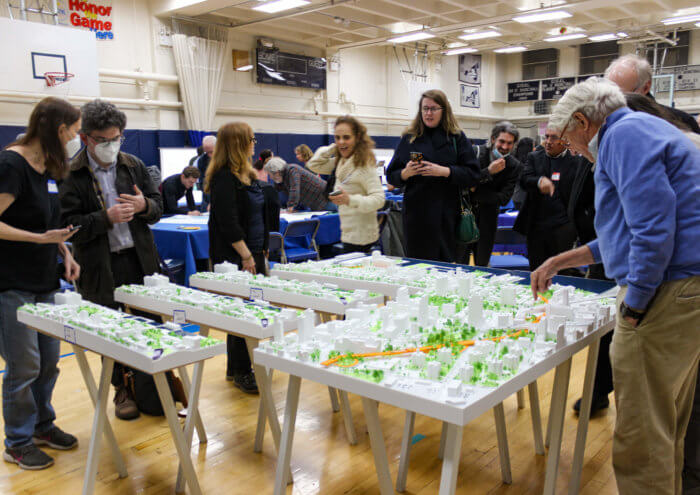
“Designing a roadway that allows open air vehicles, especially heavy ones like trucks, next to residential buildings is a terrible health hazard, and not least just quality of life. You know, safety for your kids walking around the neighborhood that they’re gonna get hit by a car or a truck,” McLaughlin said.
In regards to the two versus three-lane debate, Cobble Hill Association member Amy Breedlove told Brownstoner that the trench in Cobble Hill is already at finite capacity with the two lanes coming from the triple cantilever, and can in no way support the increase in traffic she said a three-lane highway will bring.
“What they’re trying to tell the public is that all that traffic will be solved by this wider cantilever. No, we want the public to understand that’s going to put more traffic on your surface streets outside of your doorstep where you’re trying to get your kids to school,” Breedlove said.
DOT did not bring any updated plans on the Atlantic Avenue section of the BQE to the meeting, as reps said they need more time to consider community ideas brought to previous meetings and incorporate them into the concepts.
Breedlove said it is encouraging the department has listened to local input on safety concerns in that area, and their desire to unite all three parcels of Van Voorhees Park, as well as look deeper at the interchanges. “I’m hopeful that they’re going to integrate it more and, you know, we’ll get something for a decade or more of traffic and construction.”
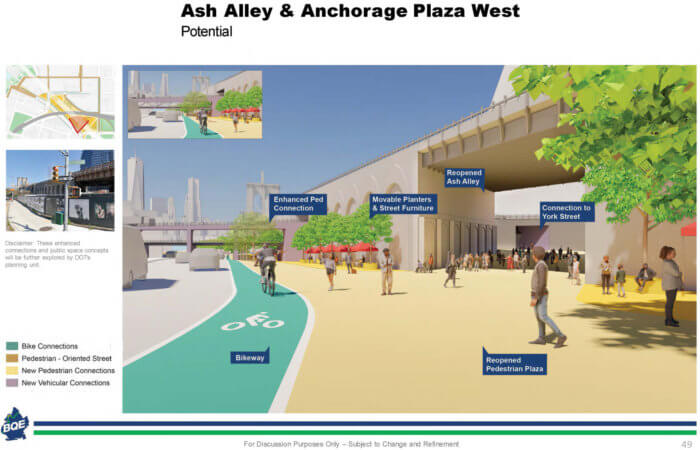
Tuesday’s presentation also included updated concepts for Squibb Park, Anchorage Plaza, Washington Street, and Farragut Houses. Proposals include adding green space and area connections that are accessible and friendly to pedestrians and cyclists.
Department reps said one way to improve the traffic and confusing roadways in the Dumbo and Manhattan Bridge Park areas would be to build a new flyover linking the Manhattan Bridge to the BQE. They could close the Jay and Nassau Street off-ramps and relocate the Sand Street on-ramp.
The DOT will continue community engagement with a virtual meeting Thursday, March 2 at 6 p.m.
A version of this story first appeared on Brooklyn Paper’s sister site Brownstoner.


